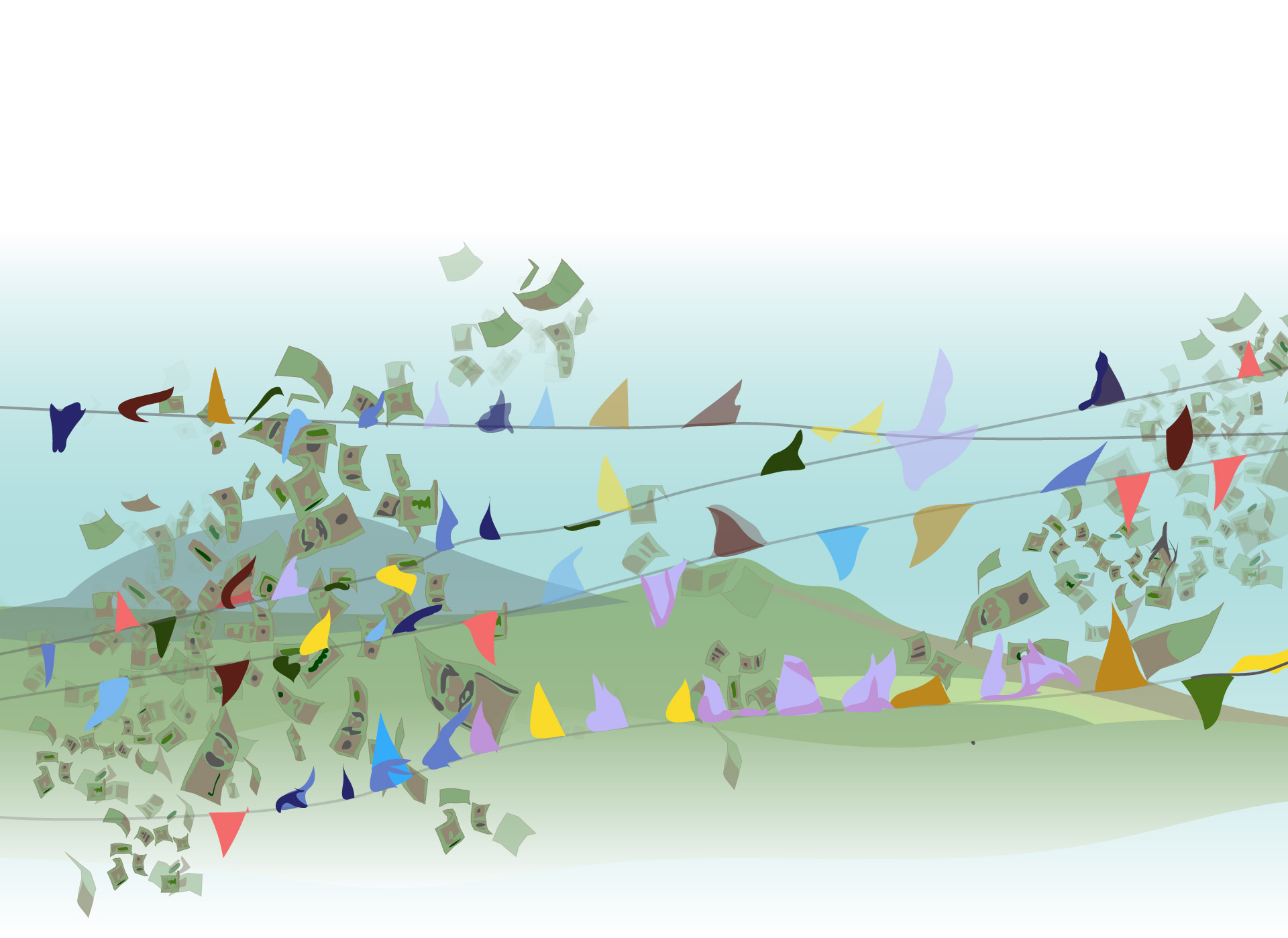Introduction
“In the eighties, even up to the crisis of ’94, a kilo of gum could get you a new pick-up. Or you could build a whole house, with good materials. You had money for lots of things, enough for a long time. That’s how business was. Sure, it was also dangerous, but there was no way not to get involved… Nothing else gave you that kind of money, you see?”
Conversations in the Sierra of Guerrero, municipality of Coyuca de Catalán in the Hotlands (Tierra Caliente), November 2020.
Any inquiry into the topic of poppy cultivation among growers in the state of Guerrero, Mexico, immediately brings one up against two central themes of drug production: on the one hand, the illegality of both the resource and the work, on the other, its unbelievable profitability.
Despite the clearly fundamental nature of these two axes, in reality few studies have focused on the local social dynamics associated with illicit crops, or examined the concrete consequences of the illegality that frames producers in their daily lives. In an effort to document these aspects, this chapter analyzes the creation and circulation of the wealth generated by, and around, poppies in Guerrero by examining the social particularities of an activity whose profitability can only be deemed “abnormal”. In effect, the money earned by producing and commercializing drugs –setting aside myths about the multimillion dollar sums exchanged in international trafficking– has an enormous impact on the societies where such illegal activities are performed.
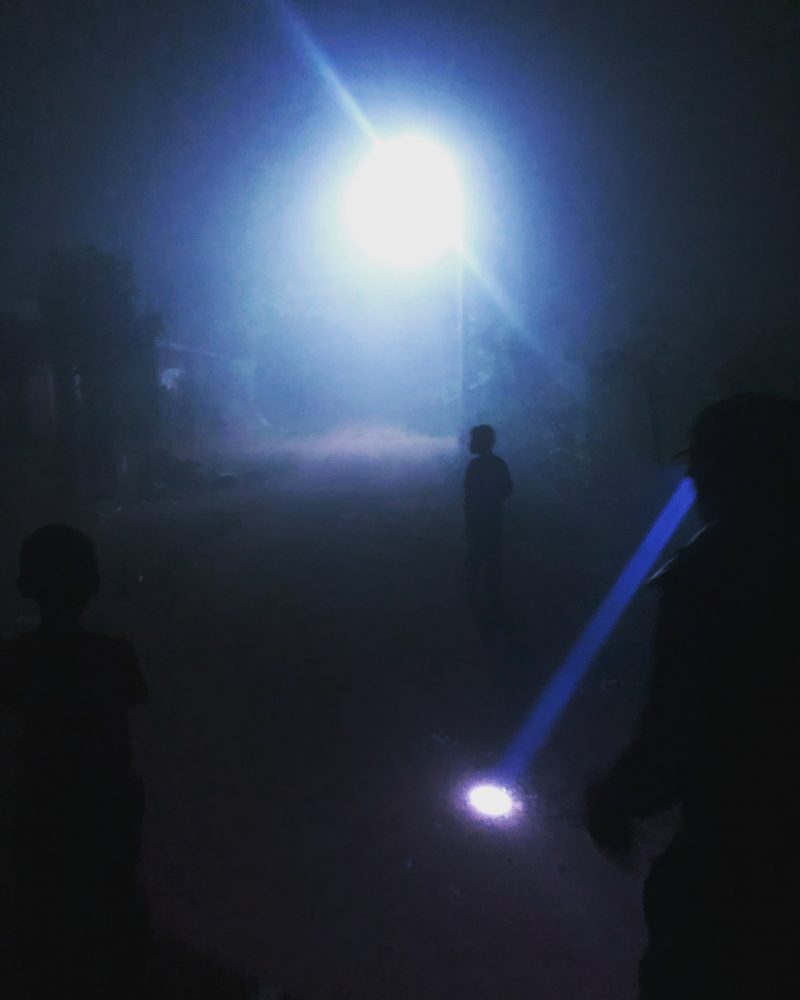
Studies in Mexico have documented the marihuana booms in Sinaloa and Michoacán in the 1970s and 80s1 where, in a short time, peasants with scarce resources gained access to a source of income that brutally broke with existing frameworks of profitability.
In Mexico, opium functions as a “political opiate”.
It enables marginalized rural areas to economically survive while the State keeps its social, educational, and development functions to a minimum.
As the fragment of the interview that introduced this chapter shows, this income is usually described, and converted into, legal equivalents, so selling a kilo and a half of marihuana equals a ton of corn, a year of migratory labor in California, or almost ten years” wages for an agricultural laborer in Michoacán2.
Testimonies of this kind abound in two regions of Guerrero: the Sierra and the Montaña3. From the 1980s to the economic crisis that hit the opium gum market in 2017-2018, the profitability of poppy cultivation had no equal:
“Historically, sure, prices fluctuated, but never below 8 or 9,000 pesos a kilo. If you harvested 10 kilos of gum, that was 80,000 pesos. After expenses you could get 60, 65, maybe 70,000 pesos –free– for just four or five months of work. When are you going to get 70,000 pesos from four months of work on corn or beans? Impossible!
Interview – Guerrero – October 2020.
This level of return reflects, simultaneously, two key aspects of drug production: first, demand, in this case consumption in the United States and Canada, and second, the illegal nature of the product. Remuneration is high due in part to the risks involved, but also to the costs of transporting drugs to markets in “the north”. The price begins to increase from the moment the gum leaves the peasants” hands. It continues to rise as it passes from one intermediary to the next. Once transformed into heroin, its value jumps again, and by the time it crosses army checkpoints and international borders to finally reach the streets for distribution, it explodes.
Understanding the weight of poppies in Guerrero is impossible if we fail to consider the socioeconomic implications of illegality. In fact, poppy is an economic resource that upsets social and economic equilibria.
Observations of this kind are what led us to analyze the poppy as an economic resource that upsets social and economic equilibria. As we sought to elucidate this perturbing dimension of poppy production the term of manna is particularly useful: the substance described in the Bible as a “miraculous delicacy”, that in common speech means a “good or gift received free and unexpectedly”4. In economic jargon, manna has been used to describe the bonanza generated by petroleum extraction and the levels of profitability associated with it, due simply to luck. Some countries endowed with hydrocarbon deposits developed economies that depend almost exclusively on providential resources like oil or natural gas, products that are especially susceptible to the ups-and-downs of the market.
The law and illicit crops
The same can be said of poppies, which in this section are examined as: 1) a source of unexpected wealth associated with a foreign world, since the flower is not endemic to the area, and its derivatives (opium, heroin) are not consumed in production zones; and 2) an element that has deeply transformed the equilibrium of local economic life. What we can never lose sight of, however, is that poppies introduced a crucial variant; namely, that this “providential” resource is illegal. Understanding the weight of poppies in the study area is impossible if we fail to consider the socioeconomic implications of illegality.
Adopting this approach poses several central questions: what social consequences has immersion in an illicit economy had for inhabitants of producing zones in Guerrero?; what do we know about the characteristics of a working life conducted in, and through, illegality?; what does this entail, for example, in terms of the construction of citizenship, family life, relations among residents, and interactions with public authorities?; and, what is the impact of imposing the stigma of criminalization on entire regions and populations?
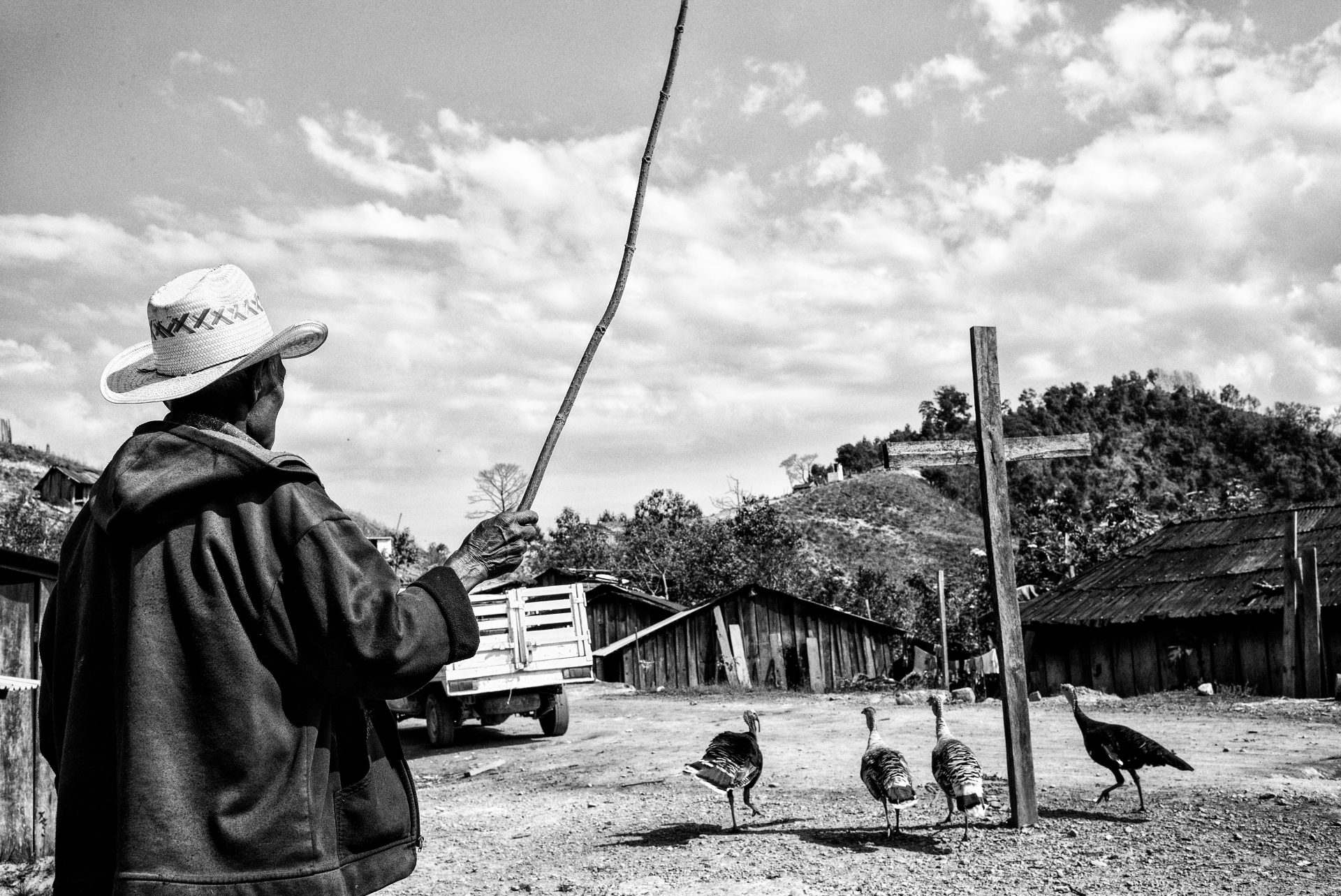
Our fieldwork was conducted in rural zones of Guerrero that entered the poppy economy in the 1980s and 90s in a context of State-imposed structural reforms, processes that privatized land and fostered an entrepreneurial transformation of agribusiness in Mexico, and chronic structural poverty and occupational vulnerability. This chapter focuses on the social and economic aspects of these developments, since other important features of the poppy economy, such as repression, violence, and insecurity, are addressed elsewhere.5
We use the word “illegal” in its strict sense; that is, to refer to an activity “that violates established law”, in an attempt to avoid normative postures that identify “good” or “bad” actors, and romanticized accounts of poppy growers in Mexico. Our goal is not to propose categories of understanding created from outside, but to describe and analyze, as objectively as possible, the living conditions of tens of thousands of rural families in Mexico.
A perturbing resource
What our fieldwork in the Sierra and Montaña of Guerrero between 2018 and 2020 reveals is the revolutionary character of the emergence and evolution of the poppy economy.
When recalling the beginnings of gum production, our informants describe a resource that transformed people’s perspectives on work, relations among peasants, the value of land, and even local customs and consumption practices; in short, a fundamental economic turn whose consequences have been felt for the past forty years. Peasants explain, for example, that the profitability of gum production led many to gradually reduce, even abandon, food crops like corn and beans, replace commercial crops like coffee, or suspend industrial activities (e.g. forest exploitation) because local competitiveness collapsed and disappeared in the 1980s and 90s.
As a result, over just two generations, the poppy became virtually the only source of employment and income for whole areas of Guerrero. Indeed, it ended up defining a way of life, as a man from the municipality of Leonardo Bravo in the Sierra explained:
“Today in the Sierra young people are poppy-growers (amapoleros). That’s the reality. And it’s our fault, the parents. Those were years with excellent prices, so the whole family got into raising poppies. That makes four generations now dedicated to this, forty years, easy. Gum prices made us dependent, we only worked on this. We’re talking about twenty years of good prices… We used to be farmers, peasants, cattle-ranchers, laborers… The prices made us gum producers (gomeros). And the government made us drug-traffickers (narcos)”
Interview – Chilpancingo – November 2020.
We recorded similar comments in the Montaña: one elderly man in the municipality of Malinaltepec complained that young people “are no longer peasants, they’re poppy-growers (amapoleros) who don´t know how to grow or work anything else”6. He expressed a generational bias but it is clear that these peasants became laborers specialized in poppies as growers, peons, cutters (rayadores), runners (corredores), collectors (acopiadores), heroin cookers, transporters, traffickers, or even hitmen (sicarios). Clearly, the poppy created new branches of activity, just like any other local industry.
Though it may seem counter-intuitive in light of the prejudices often associated with people in the Sierra and Montaña, it is interesting to observe that drug money flows from growing areas into important cities in the valleys below.
The bonanza triggered by this particular form of manna also creates bubbles for the circulation of money that transforms consumption modalities in producing regions. The first space where spending becomes evident is the communities and towns where growers and traffickers live:
“In the good times, the economy of the zone was fluid, because 95% of folks in each town grew poppies, the other 5% worked in something else, but it’s a fluid economy. The woman with her store didn’t plant poppies, but sold sodas, cookies, cheese, bread, everything… And the townsfolk that got money from gum spent it in her store. Since the economy flows thanks to income from poppies, the storekeeper also does pretty well… so does the guy who sells cement, bricks. He gets money because peasants with a little money buy materials to build a house or lay a floor; money that’s reinvested”
Interview – Filo Mayor, Leonardo Bravo Municipality – May 2018
Money from poppy cultivation is, indeed, spent on everyday expenses, as this interviewee noted, but people also use it for fiestas, celebrations, weddings, and other cultural and religious rites. Beyond this, though it may seem counter-intuitive in light of the prejudices often associated with poor people in the Sierra and Montaña, it is interesting to observe that resources flow from growing areas into important cities in the valleys below, a process we verified in both study areas. Our interviewees explained that earnings from poppy crops –that circulate in cash due to factors linked to the illegality of transactions– are spent in cities like Chilpancingo, Chilapa, Tlapa de Comonfort, Tecpán de Galeana, Acapulco, or Zihuatanejo:
“Money comes down from the Sierra into the city. People come with wads of bills to buy clothes, construction materials, household appliances, pick-ups. The brainier ones open stores in Chilpancingo or buy lots, houses, set up businesses [like] gas stations. The city really benefits from that gum money”
Interview – Chilpancingo – November 2020.
Another key element of this regional economy are the street markets (tianguis) manned by merchants from the city who offer merchandise directly in towns in the Sierra and Montaña. One resident of the municipality of Coyuca de Catalán in the Sierra summarized this. The idea is clear: “When poppy crops are good, everyone benefits”:
“People here are used to the tianguis. Merchants from cities cross the whole Sierra with their goods […] food, clothes, construction materials, tools, toys for kids … all kinds of stuff [chingaderas (shit), he laughs]. When the gum’s good, they come pretty often, pick-ups full of stuff. They bring more when it’s payment time, you know, after the harvest. They know when to come [and] set up their tianguis and organize fiestas. People spend tons of money buying most anything, but everybody’s happy. The sellers left pretty happy “cause they’d sell everything quick, then return after a few weeks. That’s how it was… With the crisis, they stopped coming. It was sad, [towns] deserted. I get it, you know, they’d come but not sell anything, lose money… now it seems they’re coming back little-by-little, and that helps us out, but you still need to go down to the city and that’s expensive… transport, gas, [work] days lost, and you never know what might happen on the way…”
Interview – Coyuca de Catalán Municipality – November 2020.
Clearly, the poppy economy nourishes not only growing areas, but spreads benefits across broad areas of the state. This illustrates the connections between areas in the Sierra and urban centers, spaces that live in a relation of marked interdependence in which the spectacular profitability of poppy crops is primordial.
Illegality and uncertainty
Our interviewees comments on the profitability of gum are, however, coupled with descriptions of a reality marked by uncertainty. Clearly distinct from macro-logical explanations of drug markets with their accounts of apparently simple, well-organized, perfectly transparent mechanisms, during our talks and interviews people spoke of lives adapted to the ephemeral, constantly exposed to impositions, obstacles, and threats, of hard times that alternate with periods of calm.
What they narrate can be summarized as fluctuation: nothing –good or bad– lasts, certainly not the bonanza of the illicit economy, though this is something that both peasants and experts find hard to grasp. A resident of the municipality of Heliodoro Castillo explained it:
“The poppy was good from the 80s more or less… really good maybe 10, 15 years ago, and lasted for around 10 years [2005-2015]. The price was really good. Now, I’m not saying that people lived well, but you got by. Then it all came tumbling down… Truth is, we never imagined the price could fall”
Interview – Filo Mayor, Leonardo Bravo Municipality – May 2018.
Every single person we interviewed mentioned this inability to foresee the collapse of the poppy economy, but their a posteriori analyses link it to the regimen of chronic uncertainty in which they live, a direct result of the illegality of the activity. Growers are not only unable to predict with any certainty how the market will behave (as occurs with legal activities, as well), but also have no official channels to turn to for information, protection, or support. At planting time, peasants have no idea what the selling price of a kilo of gum might be months later. Some information comes in early in the growing season and rampant rumors give an idea as to prices. In October and November 2020, for example, growers in the zones where we made observations and held interviews decided to plant poppies again because the information that circulated suggested that “there was demand” so their gum might sell at a “good price”, from 8,000 to 20,000 pesos a kilo ($400 to $1,000 USD).
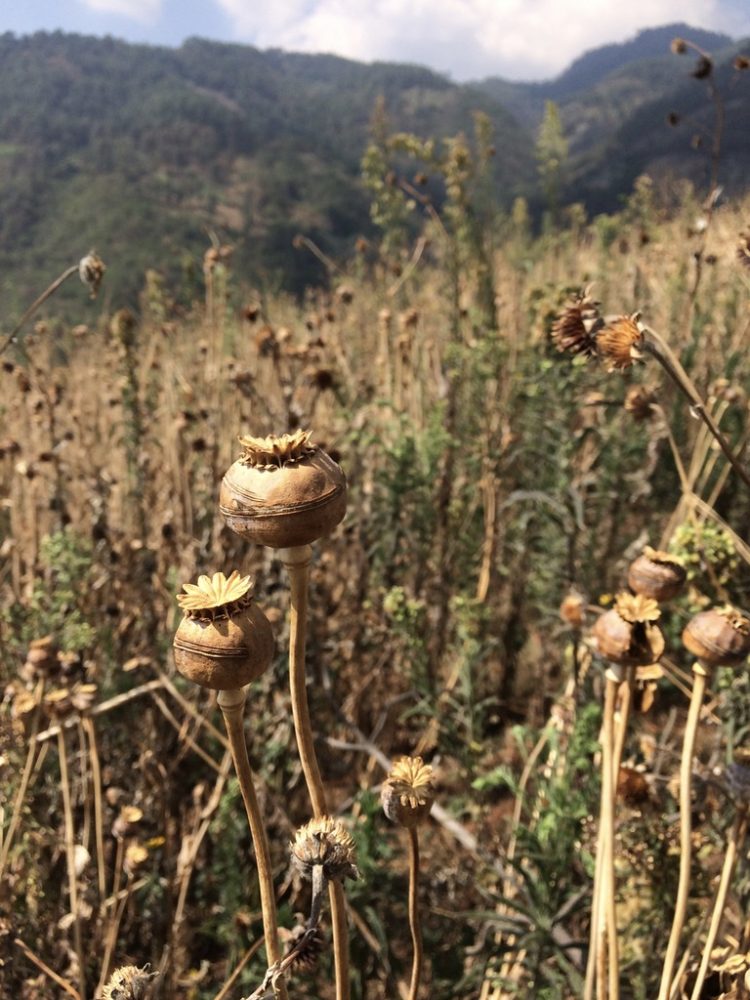
This episode revealed several crucial dynamics. First, considerable price differences between Sierra and Montaña –the latter historically disadvantaged– and between different towns and communities in the same region. Once again, contrary to what “macro” studies of the drug economy often express, there is no homogeneity when it comes to prices, either in temporal or geographic terms. What exists is great fluctuation related to factors that may be social, economic, territorial, or political. As a result, even without considering important issues like plagues and the army’s eradication campaigns, there is no guarantee as to the outcome of these peasants” labor.
Relations are based on networks of trust, circles of known intermediaries, and each grower’s capacity to obtain advantages from a certain collector or buyer. Another resident of Heliodoro Castillo explained:
“The peasant doesn’t know if he’ll do well because there’s no way to know. You might get an idea of the price year after year once you have experience. You know that rainy season gum [June-September] is the cheapest… and you have to sell it at more or less so much… And dry season [gum] [February-May], the same, so it goes… it’s all a gamble. You go in totally blind, no guarantee, I mean, it’s illegal, right… How could there be a guarantee? Who… the trafficker… the collector? Nope. Nobody. The information you get comes from your compadres [men you trust], neighbors, the whole world here talks about it, compares prices, but you just wait to see what happens”
Interview – Filo Mayor, Leonardo Bravo Municipality – 2019.
Another important feature of the poppy economy is that, especially for growers, it operates through credit and debt. Growers who fail to not accumulate capital from one harvest to the next –the majority– cannot make the required investments in tools, agrochemicals, or hoses (for irrigating the plants) before sowing. So people ask local storeowners for loans:
“You go to the man in the store and say: “Sir, loan me 20,000 pesos, I’m going to invest in gum”. He lends it to you because he knows you’re not going to lose. Well, so long as you keep an eye on nature, plagues, hailstorms.. When you sell your gum, you pay back the guy in the store”
Interview – Filo Mayor, Leonardo Bravo Municipality – 2018.
What this interviewee failed to mention (aside from the issue of eradication) is the uncertainty that surrounds the selling price. Credit/loan economies like this face an ever-present risk of crisis. Beginning in 2017-2018, cycles of indebtedness worsened as the price of gum collapsed. One storeowner in the municipality of Malinaltepec in the Montaña commented on this in November 2019, when prices were extremely low:
Question: “When did this start… when there wasn’t so much?
Interviewee: In the stores, you mean?
P: Yes.
I: Well, I guess it must be three or four years now… more or less.
P: Did it happen slowly, or was there a point when the price just dropped?
I: No… it was real sudden, yeah… Like I’m saying, here in the community, you know… It’s affected more those who have kids studying, it’s tough to study… Pay tuition and everything… Uniforms, all that stuff, you know, school supplies.
P: Do people sometimes ask for credit in your store? Do you give credit?
I: No [not now], I’ve already got a long list.
P: Since when do people owe you?
I: Two, maybe three years.
P: Really?
I: I say they can pay bit-by-bit; you know, we help each other out.
P: So you don’t open your store so much?
I: For a little while. There’s lots of stores [so] we let the others sell.
P: What do people usually buy on credit?
I: Oh, sodas, sugar, fruit…
P: Before, how often did you stock your store?
I: Before? I’d go to Tlapa once a week…
P: And now?
I: Now? not even once a month…”
Interview – Malinaltepec Municipality – November 2019.
This extract shows that the local and regional economy operates through the cycles of poppy planting and harvesting; four-month periods recently shaken by extreme peaks and valleys. The people affected may include storeowners like the one cited, as well as collectors and traffickers. These circumstances intensify the risks of violence and repression.
What happens is that the debt remains and impacts the lives of everyone involved: an indebted peasant may end up working in a relative’s poppy field, perhaps with a promise to receive a share of profits, or maybe sells his labor as a peon to a neighbor for a season, paying some expenses with his wages and trying to pay off the debt. In the end, people in the Sierra and Montaña speak of lives marked by adaptation, economic shock, solidarity, and alimentary precariousness, all exacerbated by an atmosphere of constant mistrust.
A political opiate
People’s resentment is aired not only inside their communities, but is also voiced against all three levels of government: municipal, state, and federal. In fact, many interviewees associate the development of the poppy economy with a transformation of the government’s attitude towards them. Our interviewees mentioned, for example, that public services and infrastructure were better thirty or forty years ago than today, but most interestingly, they describe close links between politics and illicit crops:
“Question: What’s the relation between politics and poppies?
Interviewee: Politics and poppies go together real well, don’t ever doubt it. The government says it’s fighting [it], says it don’t know, don’t see. But that’s not how it is. The government knows, let’s you get away with it, and gets rich with it.
P: So… that’s how it works?
I: Look, here in the Sierra, for example, in the eighties or nineties the government watched the Sierra, saw the poppies and said: ‘Aha, these guys don’t need anything’. And there’s some truth in that… folk in the Sierra will never ask you for anything. And because they had money from poppies, well, they had less reason to do it. That suited the government fine, and it washed its hands of us. That’s why you see the roads destroyed. They invest zero resources. When I first came, the roads were better than today. I assure you. I’m talking about the eighties, early nineties. Gradually, the government stopped investing, stopped maintaining. The roads are a good example because you can see it right away. They’re deteriorating and you see it with your own eyes… And if the roads are so bad, well imagine the health center, the little school…”
Interview – Chilpancingo – November 2020.
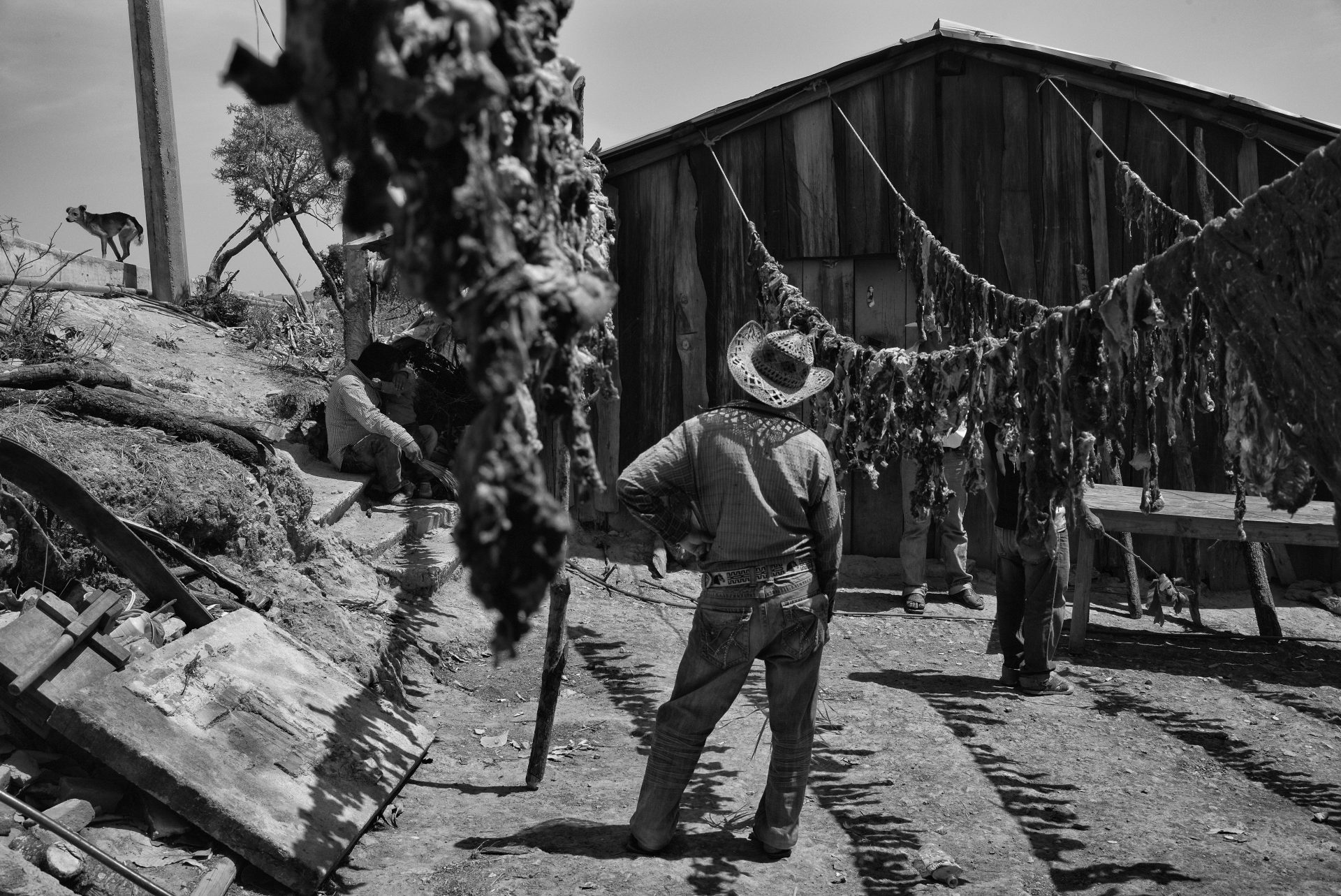
This testimony concurs with studies that show how the transformation of the role of the Mexican State is linked to the structural reforms of the 1980s and 90s; programs and policies that have deeply affected the Mexican countryside by privatizing land, fomenting a shift towards export-oriented agribusiness, and imposing severe budget cutbacks on public programs that once supported agriculture. This helps us understand how and why illicit economies developed and enjoyed success: they did not emerge against the State, but to a great degree reveal a form of adaptation to conditions imposed on workers. This interviewee continued:
“The government looks at you and tells you: “Hey, you guys make money from poppies, so why are you asking me for assistance? Just go and do your thing, get involved with gum, and I’ll wash my hands”. And that was that. Options dried up, the government left us with poppies, that’s it, and looks the other way. That lets them keep the money, see? Don’t doubt it. All the federal programs that supposedly came, where are they? Where’d they go? And the fertilizers the government pays and distributes, do you really think they don’t know what they’re for? The money falls into their hands [and] that’s why we’re all fucked. Poppies give you money for a while, but don’t leave nothing for the rest of your life”
Interview – Chilpancingo – November 2020
This testimony allows us to identify several important points. First, the individualistic character of poppy farming. Despite certain solidarity mechanisms, cultivation, earnings, losses, and risks are all managed and suffered individually, family-by-family. Second, and related to this, how this manna is applied varies markedly among households. In each town, our interviewees spoke of families that knew how to successfully save and invest the money earned from gum sales: perhaps buying building materials for house improvements, a pick-up for independence, or –in some cases– investing in education for children, some of whom have graduated and followed trajectories of upward social mobility, though this usually means abandoning their regions of origin.
Understanding how and why illicit economies developed and enjoyed success is key. They did not emerge against the State, but to a great degree reveal a form of adaptation to conditions imposed on workers.
If we think in structural terms, however, for the vast majority of families the manna from poppies has not opened opportunities for social mobility, but only allowed a few people to attain higher social status in their communities in the Sierra and Montaña. There are cases of families that became “important” or “powerful” through the poppy trade, though the truth is that most of them already had financial (resources, stores, land) or political (members in key posts or friendship with people with such profile)s capital before they began growing poppies. Thus, they integrated poppy cultivation into already established and potentialized family economies.
But for the majority, poppy cultivation only allowed families to live from one year to the next amidst cycles of uncertainty due, primarily, to the illegal character of this resource. The result is that the fantastic profitability of opium gum has had virtually no structural impact on ameliorating inequalities, poverty, educational backwardness, discrimination of various kinds, criminalization, or investment in infrastructure by the State.
Conclusion
Building on the definition of poppy as an opiate leads us to argue that in terms of political economy this flower functions as a “political opiate”.
It works as a paradoxical form of subsidy that enables marginalized rural areas to economically survive while the State keeps its social, educational, and development functions to a minimum.
One fundamental aspect of this political opiate is that while these regions can maintain themselves economically, it justifies inaction by government and the wider society. What the public perceives, once again, is the distorted idea that the drug economy is a stable world that responds to dynamic mechanisms of supply and demand but has no impact on people’s lives.
The goal of this chapter was to demonstrate the opposite, and to emphasize that as long as we ignore the social, political, and economic realities of illicit crops it will be impossible to understand the consequences they have for countries like Mexico.
Notes
- See COCHET, Hubert, Des barbelés dans la Sierra. Origine et transformation d’un système agraire au Mexique, Paris, ORSTOM Édition, 1993 ; MALKIN, Victoria, « Narcotrafficking, migration and modernity in rural Mexico », Latin American Perspectives, vol. 28, n° 4, 2001, p. 101-128 ; BLAZQUEZ, Adèle, Lecture d’un ordinaire en contexte de violence dans le Nord du Mexique. Déguisements du quotidien et détournement de la tension, Mémoire de Master, EHESS, 2013. ↩︎
- LÉONARD, Éric, De vaches et d’hirondelles. Grands éleveurs et paysans saisonniers au Mexique, Paris, ORSTOM Éditions, 1995. ↩︎
- See the work of Pierre Gaussens on Guerrero. For example “The Other Red Mountain”. ↩︎
- I take this expression from the work of Christian Geffray. See État, richesse et criminels, Mondes en développement, n°110, 2000, p. 15-30, et dans Yann Guillaud et Frédéric Létang (eds.), Du social hors la loi. L’anthropologie analytique de Christian Geffray, Marseille,IRD Éditions, 2009, pp. 243-270. ↩︎
- These themes are analyzed in a second series of reports, to be published in April 2021. ↩︎
- This dynamic has also been documented by Nathaniel Morris for Noria in the state of Nayarit, Mexico. ↩︎

